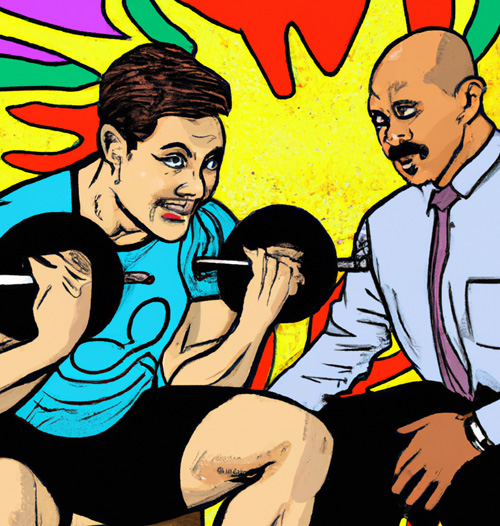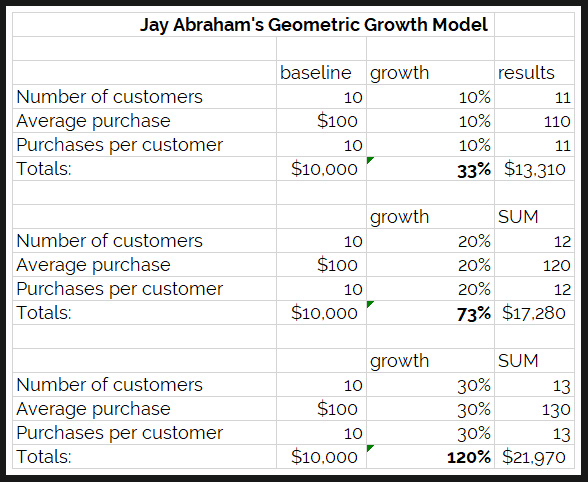Thought Leadership Studio Podcast Episodes:
6 People Who Inspired the Birth of the THAUT Process of Strategic Thought Leadership
Episode 35 - Pivotal Influences in designing Thaut as a structure for strategic, positive market impact and exponential growth

#inspiration, #jayabraham, #johnseddon, #leadership, #neurolinguisticprogramming, #nlp, #paradigmshifts, #sethgodin, #strategicthoughtleadership, #thoughtleadership, #thoughtleadershipmarketing, #thoughtleadershipmodel
Or Click here to listen or subscribe on app
What this episode will do for you
- Learn how great thinkers in motivation, leadership, marketing, service business management, and persuasion like Dr. Charles Garfield, Jay Abraham, Richard Bandler, Seth Godin, Robert Dilts, and John Seddon influenced the Thaut Process of Strategic Thought Leadership.
- Gain insight into the foundations of building Strategic Thought Leadership.
- Gain inspiration from the leaders who helped inspire the development of the Thaut Process.
- Learn some references for deeper study into these geniuses' work.
- See some empowering alternative points of view for how to approach sales, marketing, influence, and leadership.
- Get inspired to build your own thought leadership at a higher level.
Curated Transcript of Podcast Episode 35- Origins of the THAUT Process of Strategic Thought Leadership.
The transcript is lightly edited for clarity and is a partial transcript (with some bonus content)- the full episode is on audio. Click here to listen.
A brief history of the Thaut process of Strategic Thought Leadership.
I am Chris McNeil, a primary creator of the Thaut Process of Strategic Thought Leadership and the host of Thought Leadership Studio. Here is what I suspect about you as a listener of the podcast or reader of the blog...
From what I have learned, it's likely the listener is a person in business who understands the need to influence at scale and wants to get better at it. They might be aiming for business growth and feel they are pushing against a wall while wondering if there could be a door somewhere. They might want to get a business that is stale breaking suddenly and permanently upwards.

The
Thought Leadership Studio listener/reader might want to gain the satisfaction and fulfillment of making a greater positive difference in the lives of those they lead, whether they are on your team or in your audience. They might be trying to tip the thinking of an audience in a certain more positive direction and wonder how they are going to change all those minds. They might want to find deeper levels of passion so it's exciting to get up early and get to work.
Regardless, these are all places I've been. And there are people whose work gave me the needed inspiration during these times. Not only that, but certain ones taught me things that were foundational to what became the Thaut Process of Strategic Thought Leadership.
So I feel there is great value for the listener in telling the story of where the Thaut process came from. Thaut is a system of large scale, positive influence, AKA
Strategic Thought Leadership. Thaut is a method with a set of models that serve as building blocks of high-impact, positive influence.
This isn't a tutorial, it's a history, but it's also a history with touchpoints and references for those who want to take a deeper dive into the art and science of making a positive difference by changing minds, by leading people to new belief systems that empower them to get more out of whatever it is you offer or represent.
It gives a structure for organizing communication that can define and dominate a new market segment, differentiate an organization from its competition, create clear market leadership, sway an audience towards a particular point of view and make all the difference in turning all this content that we have to generate for the internet into something people really want to engage with, because it empowers them to get more of what is important to them - while also positioning what we have to offer in the best possible light.
Thaut is an acronym for Triadic Holistic Architecture Underlying Thought Leadership. It is based on the belief that if you're not leading a marketplace to new thinking, people have no reason to pay attention to your message.

The Thaut Process is based on the understanding that your audience spends an enormous amount of time on the internet. According to a 2021 report by Hootsuite, the average person spends approximately 6 hours and 54 minutes per day using the internet across all devices (including smartphones, tablets, and computers). A lot of that web time is in research mode, particularly when they're about to make a major purchase. A survey conducted by Pew Research Center in 2016 showed 82% of American adults reported that they had used the internet to research a product or service before making a purchase.
People aim to refine their buying criteria online before spending money. I have written before about how
aiming content at this pre-purchase research can influence buyers to revere the special distinctions of a product or service you represent.
I have mentioned many times that Strategic Thought Leadership benefits from elements of
Systems Thinking,
Neuro-Linguistics and Game Theory.
And there's are specific leaders from these fields and others who have impacted me positively and inspired building
Thaut as a Thought Leadership Meta-Model and to whom I owe a lot of credit. So I hope telling a story of how their work was inspiration and pivotal to building this meta-model of thought leadership as a story of the birth of Thaut and my influences is inspirational and empowering for your message-building, sales, leadership, influence or PR.
Thought Leadership Studio Episode 14 was about
building an inner board of advisors. These are people I would choose for my metaphorical inner advisory board.
Key influences behind the development of the Thaut Process
I'm sharing my influences for those who might become intrigued by the Thaut process and what it can do for them and want to study the roots. Some people just want to pick the fruit and that's fine. Others might be curious about the basis behind things.

And what I'm sharing with you are influences that were so powerful for me, but so counter to the dominant narrative... so challenging to how things are typically done outside the norm, outside the mindset, the dominant thinking of how things were done and where I applied them, that I didn't just read their books, listen to their tapes, or take their trainings once...
But I found so much value in what these people were teaching that I went through their media - or went to the trainings - time and time and time again to try to get it deeply integrated in my thinking, through these stages of intrigue and some non-judgmental testing to see how it fit, to noticing tremendous positive impact p, to the level where it finally becomes deeply embedded in my own thinking.
So then it was the deep study, the repetition, the application over and over again ... until I felt it was well integrated in the same way that I hope that the Thaut Process empowers those wanting to add to their large scale impact and influence.
Sales as a Motivational Experience
One of my earliest influences in applying the mental game to business was Dr. Charles Garfield. Hewas a NASA scientist who became a performance psychologist after being involved in the Apollo mission sending men to the moon. He was inspired by how this powerful mission took hold of a large group of people, driving them beyond their expectations.
Dr Garfield's experience with the Apollo mission led him to seek a doctorate in Psychology and he went on to write books like Peak Performance - which was about applying Sports Psychology to athletics with a mental training program - and
Peak Performers, which was about applying such mental skills in business.

At the time, I was a Psychology student and an athlete. I was fascinated with the concept that the mind was the most important factor in elevating the performance of the body, and that there were mental training methods that could elevate athletic performance tremendously when organized as an effective system. I ended up also working with a sports psychologist who had worked with a couple of US Olympic teams, asking questions like, "How could these techniques used to train the mental toughness of Olympic athletes be applied to general fitness programs to impact people's perform?"
Since I was in the fitness business, it also beget the question, "What if we re reframe the sales process from showing the equipment and talking about people and instead made it about motivating people to crystallize the vision of what they want to accomplish, the benefits of not just an absence of medical symptoms, but the joy of living in a body that can perform at high levels, with all the satisfaction and confidence?" That reframe of the purpose of the sales process was extremely successful. I recall one particular day that I sold 7 memberships with that method - a number I had been initially told could be expected in a month.
Influence: Dr. Charles Garfield
Application to Thaut Process: Reframing sales into customer-centered positive motivation.My closing ratio was also off the charts - around 70% as I recall. But this was emergent as I wasn't focused on selling, I was focused on motivating.
It was intrinsically rewarding to do it this way as well as demonstrating to myself that sometimes the best way to improve something is to aim for something else. This was a counter-intuitive principle I would revisit later.
This was a complete remake of the typical fitness center sales process. Instead of contrasting equipment with that of competitors, I disregarded all competition and instead focused on motivating prospects to achieve higher performance, with supporting beliefs that it's possible, doable and worthwhile... and it wasn't even that hard if one organized one's effort effectively with the right kind of goals that created a fast experience of success.
This mindset became part of the Map to Fitness model of exercise and lifestyle management model used in the fitness training studios that I opened, built, and successful ran for thousands of clients ... and are continuing today in the form of the businesses that I sold them to, some of them run by my former employees I trained in this model after I sold them in 2008 to move into motivational lifestyle management software based on this system.
I won national innovation awards for creating the wireless workout for handheld computers - this was before smartphones - and management software as well as motivational software, including a point system that gamified the whole motivation aspect of fitness.
So this was the beginning of seeing how reframing what some would see as a sales process as a positive motivational process brings about both more intrinsic rewards and a much more effective sales process.
Jay Abraham - Marketing as a Process to Revere and Leverage Point
One of my early influences in marketing is Jay Abraham. Jay taught me that not only is marketing an honorable profession, it's one of the smartest things businesspeople can spend time and energy on. Done rightly, it adds value to all concerned.
Some people had a negative view of marketing. But when you consider things like Jay Abraham's Strategy of Preeminence, which is based on deep empathy toward the customers point of view, advocating strongly from the customers point of view, putting the customer ahead of yourself, putting their needs ahead of yours...

Jay also taught me
geometric growth where you consider there's only three ways to grow business:
- by selling more customers,
- a greater unit of sale or
- a greater number of sales.
And when you focus your growth strategies on all three of these, you can get geometric breakthrough results. See the examples to the right for how this adds ups.
Jay also promotes the multiple pillar strategy of marketing where you develop multiple concurrent streams of lead acquisition and customer conversion while utilizing both innovation and optimization at every stage of the marketing game.
Jay teaches that it's actually easier to get breakthroughs than it is simply grow in a linear fashion when you apply his principles - and can take essentially any business and make it grow by quantum leaps.
Influence: Jay Abraham
Applications: Marketing as greatest leverage point in business, Empathy-based Marketing adding value to the customer and strengthening the relationship, Breakthrough growth strategies.Seth Godin - Permission Marketing & Unleashing Ideaviruses
Another marketing influence was Seth Godin who taught me through the concepts of
Permission Marketing and the
Ideavirus.
Permission Marketing is about how marketing on the internet in particular is done best through stages of where adds value in exchange for the recipient granting permission for further engagement - as opposed to interruption marketing, which is interrupting someone's stream of consciousness with a probably unwelcome advertisement about something else.
His book
Unleashing the Ideavirus also had a lot of impact on my thinking in that he looked at how the internet enables the spread of ideas so they become viral and created a model of a multiple of factors that contributed to how "virus worthy" an idea could be when you optimized it for transmission between people. His definition of an Ideavirus was foundation to my concept of the
Thought Leadership Model, a key component of the Thaut Process, which builds on it with the structure of language giving it direction and maximum persuasive power.
So while Jay Abraham influenced my attitude and skills in marketing in general, it was Seth Godin who gave me a philosophical basis for its application on the internet, and the confidence that organic marketing can be effective.
To me, Seth wrote the playbook on marketing on the internet. Two of his early books are still extremely relevant because there are still plenty of business people who have yet to learn the important lessons of:
- Marketing with Permission through content people get benefits directly from rather than interrupting their stream of consciousness with ads- as explained in the book Permission Marketing
- Understanding that well packaged ideas are where value is built today. These ideas can spread virally when packaged and shared well- as explained in his book Unleashing the Ideavirus
Influence: Seth Godin
Application: Marketing as applied on the internet via staged engagement that adds value.The common thread that connected Garfield, Abraham, and Godin was in seeing how sales and marketing could be a motivation experience that empowered the recipient.
I grew in my ability to leverage this mindset when I discovered
NLP, which in many ways fit my mission better than the field of psychology. Although I love sports psychology, most of psychology was focused on studying problems. And Richard Bandler, one of the co-founders of journalistic programming, said that studying problems just teaches you how to recreate problems. It's studying highly successful people and modeling them that teaches you how to be successful, it's studying people who used to have the problems that overcame them to find the common factors and make them teachable.
This seemed a much more sensible approach and I found it extremely effective, although it gets a lot of pushback because it is disruptive to the fields of psychology and psychiatry. And Bandler in particular was very willing to call a spade a spade and call out these fields for things like incentivizing keeping people sick via their hourly session model.
So of course it gets a lot of pushback as new ideas do as part of paradigms changing. And what's happening is the field of psychology is folding these innovative discoveries of nlp like eye movement patterns, showing whether someone is thinking visually in auditory sounds or feelings and be able to keep and rapport.
And because it's a way of codifying these objectives, experience, which is the key to discovering the processes of great thinkers and modeling them being subjective. It isn't as easily studied is the objective.
Then you have Richard Bandler and John Grinder at my mentors and leaders in Neuro-Linguistic Programming, which gives a structure to study in replicating excellence in any area by modeling the most likely unconscious thought processes of people who are exemplary. I have trained extensively in NLP, obtaining a master practitioner level. I've also trained in its offshoot from Richard Bandler, Design Human Engineering.
NLP not only gives the structure of excellence, it also gives models for utilizing the structure of language for subconscious influence, which is important when you remember that decision making for purchases in particular is largely unconscious and emotional. The conscious mind is brought along to support it with rational thinking, but such decisions are always predicated on emotions. So you have to sell to both sides of the brain.
I've taken the deep dive into Richard Bandler with his partner John LaValle in teaching persuasion engineering and brought my staff to Orlando annually for such trainings where I stayed for more advanced NLP training.
Influence: Richard Bandler
- Embedded Metaphor through nested loops.
- Subconscious-based positive influence.
- Language Patterns for mass positive influence.
- NLP giving a structured syntax of excellence and the structure of language
- Recommend: Persuasion Engineering
Application: Language patterns for positive impact and breaking free of hidden limitations.And speaking of modeling excellence, I should also mention Robert Dilts, who's one of the best modelers - if not the best - in the field of NLP, was a very early participant in developing NLP models. And his work in modeling strategies of genius has had a tremendous impact on my business thinking in creating methods of accessing and applying profitably the the thinking strategies of creative geniuses like Mozart and Walt Disney. Applying Mozart's thinking was a breakthrough of my music. It may not have made me Mozart and I didn't expect it to, but it was certainly accelerating learning and it was a breakthrough leap in my ability to compose music that I wasn't gotten through learning in a standard way.
Influence: Robert Dilts
Application: Strategies for transcending limitations, finding insights, and accessing genius states.So all these NLP influences also add up to methods of accelerated learning. And I consider
Systems Thinking in some ways a sister discipline to NLP so I started learning about Systems Thinking through my association with NLP.
Whenever I managed to really apply Systems Thinking in my businesses, there were breakthroughs - usually counterintuitive breakthroughs I never would've thought of without using tools to study things as a system.
But I was lost a bit in finding ways to apply the more manufacturing oriented systems thinking of say Edward Deming to service businesses until I ran across the work of another great influence.
John Seddon - Applying Systems Thinking to Services Businesses
John Seddon is the creator of the Vanguard Method in the UK and founder of the Vanguard Group, my friend, and soon to be guest on the Thought Leadership Studio podcast.
John took the
Systems Thinking of Edward Deming behind the manufacturing revolution of Japan, in particular Toyota, and found ways to apply it in service businesses where they go in and create results that in his words, "nobody would ever have put into a plan".
He found leverage points that are common to all service businesses that show some of the toxic side-effect of top-down management, which also rears its head in targeted marketing. Seddon's Vanguard Method promotes ways to think more
outside-in based on the system's truth that it is the customer who sets the value of a service, so you can only truly optimize your profits by designing it from the customer point of view.
So he demonstrated that it this designing from the customer point of view, designing to demand, he calls it. And another breakthrough of John Seddon was defining what he calls
failure demand and what I call
remedy pull. Failure demand is the demand on the business from customers resulting when you don't do something right and they have to come back to fix it or to get a remedy. And he found that some businesses have up to 80% of their demand is failure demand.
And if you can flush out failure demand, it's a tremendous leverage point to any service business because it frees up resources and automatically increases capacity, profit and sales even before you consider the dynamics of better customer satisfaction in the company, greater referrals and word of mouth.
Influenced by John's work, I asked a couple of key questions that impacted the Thaut Process:
- What if you draw the system-defining boundary around a business to also include its media?
- What if you consider this media a service the business provides to prospective customers who pay with engagement and attention ahead of paying with money>
- What if you optimize this media-as-service using principles like the Vanguard Group uses to optimize service businesses for breakthrough results?
Influence: John Seddon
- Applying Systems Thinking for breakthroughs in service businesses.
- Intervention methods to interrupt outdated business management thinking and help leaders become more open to changing their beliefs.
- Designing to Demand from the Outside-In as a leverage point in service businesses.
- Recommended: Beyond Command and Control.
Application: Outside-in design-to-demand applied to content marketing, challenging top-down hierarchical thinking applied to marketing.In a sense, the Thaut Process could be consider a subcategory of Godin's Permission Marketing. It is also a set of building blocks that can define and package what he would call an Ideavirus more effectively. It utilizes some of the models of Neuro-Linguistics for Bandler Grander and Robert Dilts as well as some of the excellence modeling of Robert Dilts, modeling thinking strategies he uncovered that were consistent in effective geniuses and not others.
It draws on the outside in designed to demand methodology of the Vanguard Method, bringing in Systems Thinking to marketing by considering marketing as a service provided to customers who pay with their attention ahead of paying with the purchase and therefore can be get the same kinds of breakthroughs that the Vanguard group has brought to service businesses, to organizations, marketing programs. So, while the Thaut Process certainly stands on the shoulder of giants, it is unique.
It gives clear building blocks to building a Thought Leadership Model with subconscious influence to impact entire markets powerfully and makes content marketing that easier and more effective.
The Thaut Process owes a lot to these geniuses, these leaders who've influenced my thinking me over the years. So this podcast and post is an expression of gratitude to all of them.
The transcript is lightly edited for clarity and is a partial transcript (with some bonus content)- the full episode is on audio. Click here to listen.
***************************************
Free Stuff and Offers Mentioned in Podcast
***************************************
***************************************